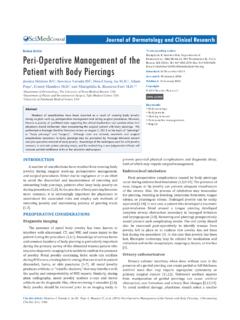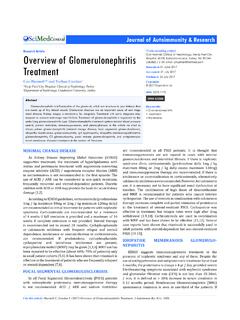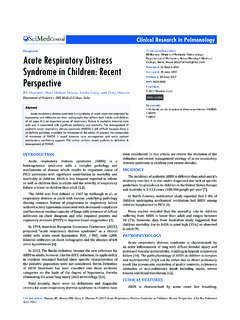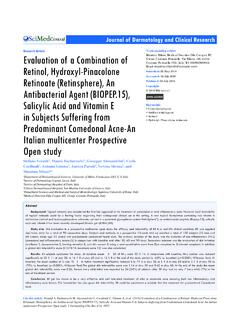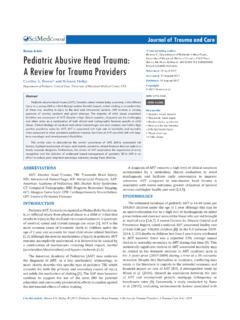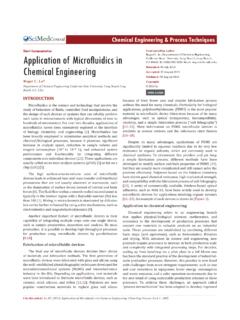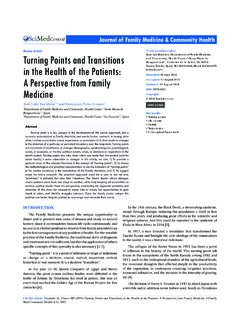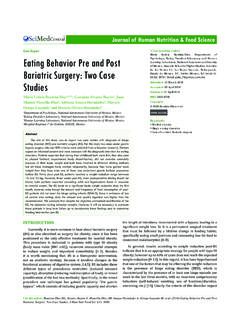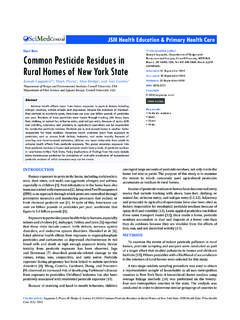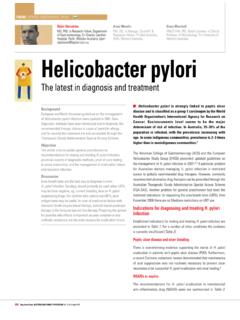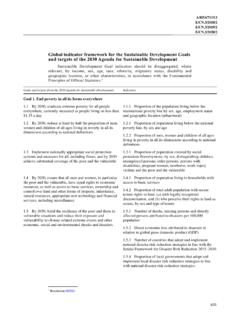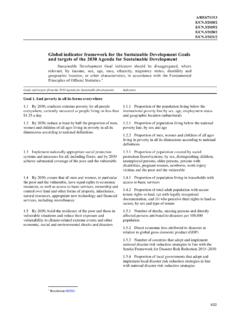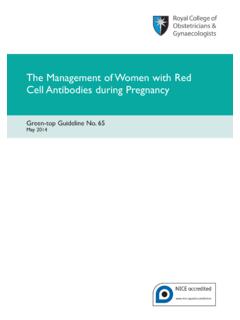Transcription of Methods for Hemoglobin Estimation: A Review of “What …
1 CentralJournal of Hematology & Transfusion Cite this article: Srivastava T, Negandhi H, Neogi SB, Sharma J, Saxena R (2014) Methods for Hemoglobin estimation : A Review of What Works . J Hematol Transfus 2(3): 1028.*Corresponding authorDr Himanshu Negandhi, Assistant Professor, Indian Institute of Public Health, Plot 47, Sector 44, Institutional Area, Gurgaon-122002, Haryana, India, Tel: 0124-4722900; Fax: +91-124-4722901; E-mail: 09 August 2014 Accepted: 01 November 2014 Published: 03 November 2014 ISSN: 2333-6684 Copyright 2014 Negandhi et al. OPEN ACCESS Keywords Anemia Hemoglobin Hemoglobin estimation Methods HemocueResearch Article Methods for Hemoglobin estimation : A Review of What Works Tanushree Srivastava1, Himanshu Negandhi1*, Sutapa B Neogi1, Jyoti Sharma1 and Renu Saxena21 Indian Institute of Public Health, Public Health Foundation of India, Delhi2 Department of Hematology, All India Institute of Medical Sciences, New DelhiAbstractAnemia is widely prevalent in developing world and is a public health challenge in India.
2 Hb assessment is a reliable indicator for anemia screening. However, there are multiple techniques with different applications available for Hb estimation . The present work was undertaken to Review Hb assessment Methods that can work best from the developing country perspective. We reviewed published literature through the PubMed database for studies comparing different techniques of Hb estimation . A search for reports on prevalence of anemia both at the global and national level was also undertaken. A total of 74 articles were included in this Review . It was realized that even though there are multiple techniques for Hb estimation , a method which is quick, valid and reliable is needed to detect anemia.
3 Direct cyanmethemoglobin method has been the gold standard for Hemoglobin estimation but other Methods like Hemoglobin color scale, Sahli technique, Lovibond-Drabkin technique, Tallqvist technique, copper-sulfate method, HemoCue and automated haematology analyzers are also available. Each method has a different working principle and its own advantages and disadvantages. Despite conflicting reports, it has been observed that HemoCue is the method of choice for initial screening of anemia because it is reliable, portable, does not require power supply and easy to use in poor resource settings without requiring extensive training of health workers. Hemoglobin color scale developed by HCS is another potential method that can be used in field situations.
4 However, such Methods should be further investigated through larger studies before actual : World Health Organization; DLHS: District Level Health Survey; NFHS: National Family Health Survey; Hb: Hemoglobin ; HCS: Hemoglobin Color Scale; HiCN: Direct Cyanmethemoglobin; HLL: Hindustan Lifecare Limited; OPD: Outpatient department; AIIMS: All India Institute of Medical Sciences; INTRODUCTIONA nemia is widely prevalent in the developing world and a major public health problem needing urgent attention of policy planners. WHO report of 1992 stated an overall prevalence of 42% of anemia in women of developing countries; 51% in pregnant women and 41% in non-pregnant women. Out of these nearly half the total numbers of women are from South East Asia [1].
5 Later in 1993-2005, WHO database on global prevalence of anemia reported an overall prevalence of 25% where of pre-school children, of pregnant women and of non-pregnant women were estimated to have anemia [2]. A recent systematic analysis of global anemia burden has reported that the prevalence of anemia has decreased from in 1990 to in 2010. Also, females had higher prevalence and mean severity of anemia in virtually all regions and throughout adulthood whereas male children had higher anemia prevalence than females [3].Anemia is a public health challenge in India and mostly affects women of reproductive age and preschool children. The District Level Health Survey (DLHS) 2002-2004 reports an extremely high burden of anemia with 98% of adolescent girls and around 96% of pregnant women suffering from this condition [4].
6 The National Family Health Survey (NFHS)-3rd in 2005-2006 reported that 55% of women and 24% of men were also found to have Hemoglobin levels lower than the cut off [5]. Studies have reported an increasing trend in prevalence of anemia from (NFHS-2, 1998-1999) to (NFHS-3, 2005-2006) [6]. Moreover, the severity of anemia was higher in pregnant population [7]. A survey of 16 districts from 11 states of India reported 90% prevalence of anemia in adolescent girls and in pregnant women [8]. A similar prevalence of 90% in CentralNegandhi et al. (2014)Email: J Hematol Transfus 2(3): 1028 (2014) 2/7girls has also been reported from a survey of 35 states and union territories of India [9].
7 Despite several interventions through national programmes, anemia is still endemic in women. Low level of Hemoglobin among pregnant women results in premature delivery, low birth weight and prenatal mortality. It also retards physiological growth in adolescent girls [4]. Anemia in young children is a serious concern because it can result in impaired cognitive performance, behavioural and motor development, coordination, language development, and scholastic achievement as well as increased morbidity from infectious diseases [4,5]. One of the most vulnerable groups is children in the age group of 6-23 months [5]. DLHS-2 reported that more than 96% of children are suffering from anemia whereas NFHS-3 reported that 70% of children in the age group of 6-59 months are anemic [4, 5].
8 NFHS-3 also observed that even for mothers who were not anemic, 62% had anemic children (6-59 months). The prevalence of anemia in children rose steadily with the mother s level of anemia, reaching 82% for children of mothers who were severely anemic [5]. A recent study published in 2014 found prevalence of anemia in children (6-30 months) [10]. Therefore, more than half of the population is suffering from We conducted an online search of PubMed using terms Hemoglobin OR haemoglobin , prevalence of anemia OR anaemia , Hemoglobin estimation , HemoCue , automated haematology analyzer , cyanmethemoglobin , non-invasive Hemoglobin estimation and a combination of these.
9 We considered studies comparing commonly used Methods for Hemoglobin estimation in any setting, reporting validation and/or reliability for further Review . The search was limited by species (humans) and full text availability; only articles published in English were considered. We also searched reports on prevalence of anemia in India and worldwide. The reference list of identified articles was also reviewed and the articles considered relevant were selected. RESULTSA quick, valid and reliable estimation of Hemoglobin status is vital to detect anemia in the population at risk. An early diagnosis of anemia can provide an opportunity to remedy the situation in the public health problem context as well as prevent progression of the condition (Figure 1).
10 The measurement of Hb has traditionally relied on the services of a well-equipped clinical laboratory. Direct cyanmethemoglobin method has been the gold standard for Hemoglobin estimation and is cheap but time consuming. A number of other Methods are available such as Hemoglobin color scale, Sahli technique, Lovibond-Drabkin technique, Tallqvist technique, copper-sulfate method, HemoCue and automated haematology analyzers. Each method has a different working principle and its own advantages and disadvantages. Simple techniques to measure Hb exist but they are relatively expensive and require commercial reagents and good technical skills to number of Methods with their specific working principle, advantages and disadvantages are present however most of these Methods are no longer used.
